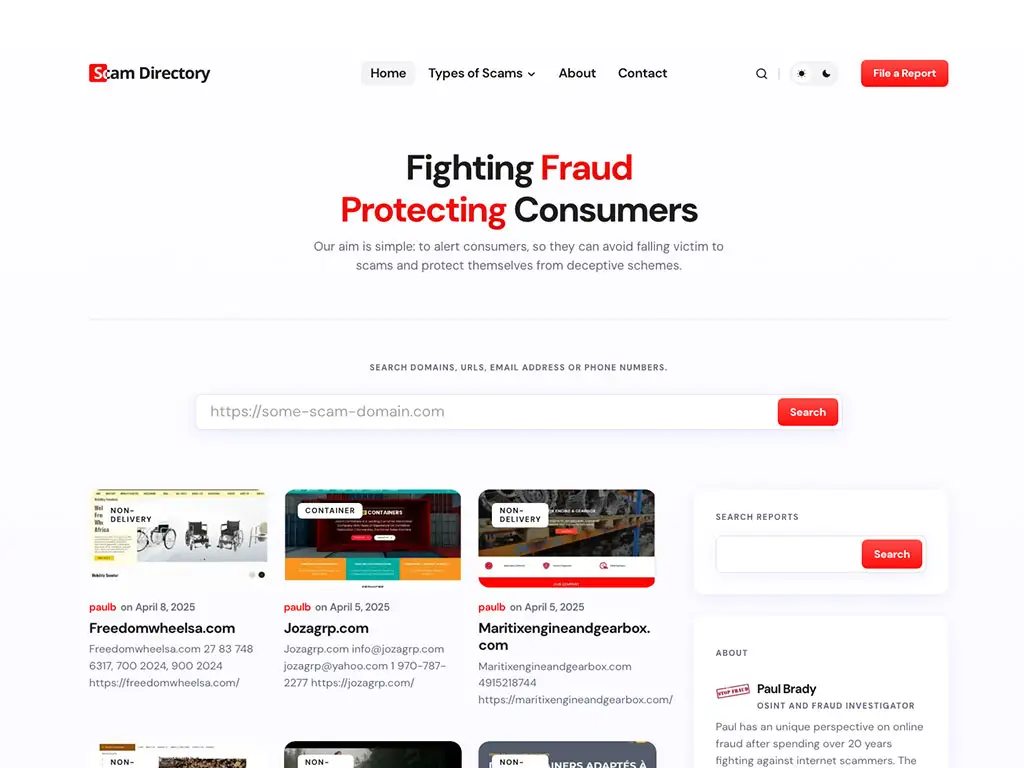Fighting Fraud
Protecting Consumers



Scam.Directory: Exposing Online Scams to Protect the Public
The internet can be a dangerous place—and for every new convenience or tool, there’s often a scam waiting in the shadows. That’s where Scam.Directory comes in.
Run by experienced professionals in fraud investigation, cybersecurity, and OSINT (Open Source Intelligence), Scam.Directory is a public-facing platform designed to expose scam websites and help people stay safe online.
Why Scam.Directory Exists
When investigators dig into individual fraud cases, they often uncover far more than just a single scam. What begins as one fake website can lead to the discovery of hundreds of related scams—each posing a threat to unsuspecting victims.
Rather than letting those dangerous sites slip through the cracks, Scam.Directory takes action.
What we do
Scam.Directory publishes detailed warnings and reports about scam websites that are uncovered during investigations. These reports may include:
- Site names and URLs
- Tactics used to deceive visitors
- Red flags to watch out for
- Links to legitimate resources
- And sometimes even connections between different scam operations
It’s not just about listing scam sites—it’s about connecting the dots and making that information freely available to the public.
A Mission to Protect
Online scams continue to evolve, and new sites pop up faster than they can be taken down. Scam.Directory is fighting back with transparency, intelligence sharing, and public awareness.
Whether you’re a casual internet user, a business owner, or part of a security team, Scam.Directory is a resource worth bookmarking. You might just avoid becoming the next victim.
Stay informed. Stay safe. Spread the word

Scam.Directory
The Scam Directory uncovers and labels Non Delivery scam websites as fraudulent. Our aim is simple: to alert consumers, so they can avoid falling victim to scams and protect themselves from deceptive schemes.

PetScams.com
Petscams.com was created with the purpose of cataloguing the latest pet related websites built by scammers. We aim to cause as much disruption to their activities as possible.

StopGunScams.com
Fake gun and ammunition scammers are posing as online retail storefronts and aiming to steal your cash and personal information with too-good-to-be-true ammo deals and offers. StopGunScams.com aims to disrupt these scammers by exposing their fake websites online so that you can learn to avoid them.

